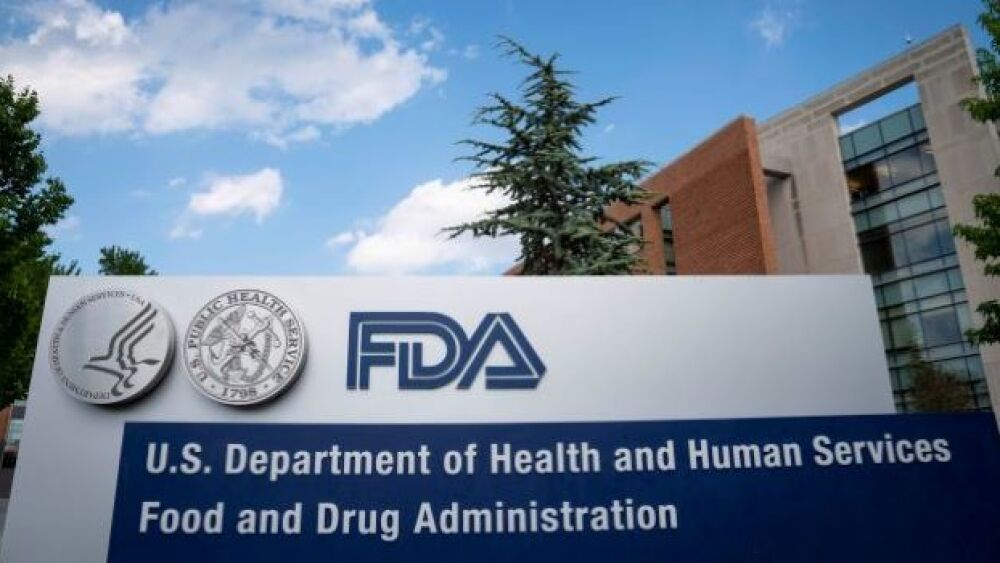The U.S. FDA has had a mix of announcements this week, from drug approvals to the acceptance of NDAs and INDs. Here’s a look.
Sarah Silbiger/Getty Images
The U.S.Food and Drug Administration (FDA) has had a mix of announcements this week, from drug approvals to acceptance of New Drug Applications (NDAs) and Investigational New Drug Applications (INDs). Here’s a look.
Drug Approvals
Boehringer Ingelheim Pharmaceutical’s Pradaxa
On June 21, the FDA approved Boehringer Ingelheim’s Pradaxa (dabigatrain etexilate) oral pellets for children three months of age to less than 12 years of age with venous thromboembolism directly after treatment with a blood thinner.
Venous thromboembolism is a blood clot in the veins. The drug was also approved as a capsule to treat blood clots in patients eight years and older with venous thromboembolism directly after treatment with a blood thinner given by injection for at least five days and prevent recurrent blood clots in patients eight years and older.
“The FDA is committed to helping our youngest patients with serious medical conditions have treatment that are relatively easy to take,” said Ann Farrell, director of the Division of Non-Malignant Hematology in the FDA’s Center for Drug Evaluation and Research. “With today’s approval of Pradaxa, pediatric patients have another therapeutic option to treat and prevent potentially deadly blood clots.”
Santen’s Verkazia
On June 24, the FDA approved Santen‘s Verkazia (cyclosporine ophthalmic emulsion) 0.1% eye drops for vernal keratoconjunctivitis (VKC) in children and adults. VKC is a rare and recurrent allergic eye condition.
“This is an important milestone in Santen’s aim to bring innovative solutions that protect vision for those affected by rare ophthalmic conditions, and is the first prescription product approved for Santen in the U.S. market,” said Tatsuya Kaihara, chief executive officer of Santen and head of Santen North America.
NDA and IND Acceptances
The FDA accepted Alnylam Pharmaceuticals NDA for vutrisiran for the treatment of polyneuropathy of hereditary transthyretin-mediated (hATTR) amyloidosis in adults. The drug is an RNAI therapeutic.
The FDA set a target action date of April 14, 2022. In addition, the drug has been granted Orphan Drug Designation in the U.S. and EU and Fast-Track designation in the U.S.
“We are excited that the FDA has accepted our NDA for futrisiran, which was based on nine-month results from the HELIOS-A study,” said Rena Denoncourt, vice president, TTR Franchise Lead, Alnylam. “Today’s announcement marks another important milestone as we work to make vutrisiran available to hATTR amyloidosis patients with polyneuropathy. If approved, once-quarterly, subcutaneously administered vutrisiran may represent a new treatment option that potentially reverses polyneuropathy manifestations of disease.”
Nanoscope Therapeutics’ Optogenetic Gene Monotherapy
The FDA approved Nanoscope Therapeutics’ IND for its Phase IIb trial of MCO-010, an ambient-light activatable optogenetic monotherapy to restore eyesight in patients with advanced retinitis pigmentosa (RP).
The Phase IIb trial will begin in June, and will be a randomized, double-blind, sham-controlled, multi-center trial in the U.S. It will involve a single intravitreal injection of the therapy to confirm the therapy’s ability to improve eyesight. The drug has received orphan drug designations from the FDA for both RP and Stargardt disease.
The gene therapy uses an AAV2 vector to deliver the MCO genes into bipolar retinal cells, where they express polychromatic opsins that allow vision in different color environments. It is designed to be given in an office setting.
“Congratulations to the Nanoscope team and I am excited to be part of it,” said Sulagna Bhattacharya, chief executive officer of Nanoscope. “We hope our therapy will restore vision in ambient light without any external device, eliminating risk of photo-toxicity.”





